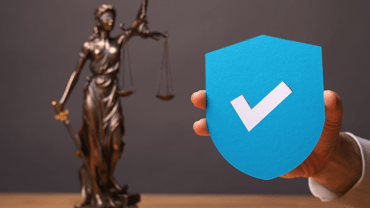 Briefing
Briefing
Blue Cross Blue Shield Class Action Settlement FAQs
- Never had a BCBS plan? Then, this doesn’t affect you, your company or your plan.
- If you were fully insured with BCBS 2008-2020 or self-funded with BCBS 2015-2020 then you may be able to file a claim for settlement funds.
Background
In October of 2020, Blue Cross and Blue Shield (BCBS) companies reached an agreement to settle a class action lawsuit in a case brought by subscribers related to licensing agreements within the BCBS system. While the BCBS Companies rejected claims made by the plaintiffs in the case, they agreed to provide monetary payments to eligible individuals and employers and to make some operations changes across the Blue Cross and Blue Shield system. The parties agreed to a settlement to avoid the risk and cost of further litigation. The settlement terms will be reviewed by the Court on October 20, 2021 to determine if the settlement is fair, reasonable, and adequate.
This Briefing focuses on the financial settlement. A Net Settlement Fund of approximately $1.9 billion will be distributed to “Damages Class Members” (i.e. employers and individuals). The gross settlement amount is $2.67 billion, with $667 million set aside for Plaintiff attorney fees and $100 million allocated to settlement administration costs.
The deadline to file a claim for a settlement payment is November 5, 2021. Filing a claim, either online or by downloading a paper form from the settlement website, is straightforward and not a lengthy process, and can be done in a just a few minutes. If you choose to participate in the class action settlement, there is no need to hire outside professionals to facilitate this process. We are aware that some employers have been approached by administrators, accounting firms, and law firms promising their help with this process in exchange for fees—fees that come out of your recovery and are certainly not necessary.
Q: Where can I or my employees get more information on this settlement and the claim settlement process?
Answer: A special settlement website, www.BCBSsettlement.com, has been set up to provide information and allow for on-line claim filing. The site has its own detailed Frequently Asked Questions (FAQs) section. The site also provides access to important settlement documents. Three documents that are especially useful in gaining a fuller understanding of the mechanics of the settlement are the Proposed Plan of Distribution, the Long Form Notice, and the Claim Form PDF.
In addition, there is a settlement customer service line, (888) 681-1142, that employers or individuals may use to speak to a representative Monday-Friday or access the various IVRs (Interactive Voice Recordings) 24/7. The claim administrator can also be contacted by email at info@BCBSsettlement.com.
Q: Who are settlement class members?
Answer: Both employers (i.e. plan sponsors), and employees (but not dependents) covered under group health plans, as well as individuals purchasing BCBS insurance directly, are class members if they purchased or were enrolled in:
- A fully-insured plan or individual policy between February 8, 2008 through October 16, 2020, or
- A self-funded plan between September 1, 2015 and October 16, 2020.
Entities such as multiemployer welfare arrangements (MEWAs), Associations, and Taft Hartley Plans are also eligible to file a claim. BCBS Medical, dental, pharmacy, vision and stop-loss products are included. Enrollment only in a stand-alone vision or dental plan does not qualify for settlement consideration.
“Government Accounts” are excluded from the settlement. A government account includes a federal, state, county, or municipal entity, but does not include utilities, school districts, public libraries, port or transportation authorities, waste disposal districts or police or fire departments. While the settlement doesn’t specify whether joint powers authorities (JPAs) are included or excluded from the settlement, it appears from the list above that a school district JPA would not be excluded. We are in the course of seeking clarification with the claims administrator regarding JPAs and will update this Briefing when more information becomes available.
Q: How does the settlement process work?
Answer: The settlement agreement requires that each BCBS plan provide the settlement claim administrator (JND Legal Administration) with billed premium and fee information and covered lives counts, as well contact information for class members, including a personal identifier (“unique ID”) that will be assigned to each potential claimant.
The claim administrator will use email contact information supplied by the BCBS plans to send out notices. If a valid email address is not available, postcard notices will be sent instead. There will also be an extensive media campaign to provide settlement information through digital, radio, magazine, and TV ads.
There is the question of how an employer claim settlement notice can be distinguished from an individual claim notice. Based on a conversation with a JND claim settlement supervisor, if an employer representative who is also a plan participant gets a notice about the settlement with the code on it, the advice is that he or she should assume it is directed at them personally and that they should file the claim on behalf of themselves using the code provided. They can then file a second claim, this one on behalf of the employer/plan sponsor, by following the same process but without using the code. We are seeking further confirmation from the claim administrator regarding how to distinguish employer claim settlement notices from individual employee notices.
Employers are not obligated to notify employees of the settlement. However, the direct communications to employees from the settlement claim administrator is likely to lead to questions for HR and Benefit departments. Employees can be directed to the settlement website, toll-free line, and email address of the claim administrator.
Q: Can an employer or employee opt out of the settlement?
Answer: Any potential class member can request to be excluded from the settlement. If a person or business does opt-out they will receive no money from the settlement but will retain the right to sue the BCBS plan for the claims in this case. If an employer opts-out of the settlement and does not file a claim, individual employees still retain the right to file and collect under the settlement. Any request to opt out must be postmarked by July 28, 2021.
Q: How much money will be distributed?
Answer: Separate settlement funds will be established for fully-insured class members and self-insured class members. $1.78 billion will be set aside for fully-insured individual and group purchasers (and their employees). $120 million will be available for self-funded accounts and their employees. Within those two funds, the money will be paid out proportionately based on the entities’ share of the overall premium or fees in that settlement class.
Q: How does a class member get a payment?
Answer: Employees, employers, and other entities (such as member purchasing associations) have independent rights to file claims and request monetary awards. Plan sponsors and plan enrollees will each receive claim notices. The proposed distribution plan provides various methodologies for the settlement claims administrator to use to calculate separate payments to employers and their eligible employees.
A claim must be submitted online at www.BCBSsettlement.com or postmarked by mail no later than November 5, 2021. Paper claim forms are available at the settlement website or can be requested by calling (888) 681-1142. If no claim is filed, there is no default award amount that will automatically be distributed to that potential claimant.
Q: How will the settlement money be allocated between eligible class members?
Answer: When filing a claim, either the employer or the individual employee can accept a contribution “default option” or apply for an “alternative option” if they believe their percentage of the total contribution was higher than the default percentage. Employers are not obligated to provide historical premium or administrative fee data to employees who might choose to file an “alternative” claim.
Under the default option, under which no detail supporting data or evidence is required to be submitted at time of filing, total premiums or self-insured fees for any settlement year will be allocated based on set percentages, as follows:
Fully-insured plans:
- Single coverage: 85% employer and 15% employee
- Family coverage: 66% employer and 34% employee
Self-funded plans:
- Single coverage: 82% employer and 18% employee
- Family coverage: 75% employer and 25% employee
The family coverage percentage applies to all dependent categories, whether spouse or children-only or spouse and children.
The alternative contribution option requires the claimant to provide data or evidence to support the percentage listed. Satisfactory documentation can include an attestation signed under penalty of perjury when other documentation is no longer available. If satisfactory evidence is not submitted, the default option will be applied to that claim. Any “default” claimant whose counterpoint (e.g. for a claiming employer, the employee) elects the alternative option will be contacted by the claim administrator and provided the opportunity to submit additional evidence. If an employer elects an alternative option and provides satisfactory documentation, all claiming employees of that group will be treated as having elected the alternative option.
The employer will be credited with 100% of the value of premiums not claimed by employees as well as the value of any employee claims falling below a $5 minimum payment threshold. Because in these situations the employer will be receiving a settlement payment that includes some money attributable to employee contributions, an ERISA plan sponsor should determine to what extent some portion of the settlement payment constitutes a plan asset that must be shared with plan participants. Note, however, that FAQ 35 on the settlement website asks if an employer is obligated to share any recovery with its employees and answers: “No. Employees are eligible to participate in the Settlement and receive a payment for their estimated portion of premiums.”
The claim payment amount will be determined by the following formula, applied separate to fully-insured and self-funded claimants.
|
Total premiums (or administrative fees) paid by a particular claimant during the settlement period
|
Q: How will the settlement money be distributed?
Answer: After the claims period has closed (remember the deadline to file/postmark your claim is November 5, 2021), the settlement claims administrator will create a secure portal on the settlement website and post the year-by-year premiums and/or administrative fees (which form the basis of the claimant’s ultimate distribution) assigned to each claimant, based on data provided by the BCBS plan and any other information gather by the claim administrator through the claim process. While this figure will not represent the claimant’s settlement payment, it will identify the basis for calculating such payment. Claimants will be able to review the paid premium or fees used to calculate their award and can contest those figures and request a correction within 30 days of the secure portal posting.
Settlement payments will be made pursuant to the method specified on each respective claim form, i.e. Venmo, PayPal, pre-paid card, or check. At this time, the settlement claim form only states that benefits will be distributed at some date after the settlement is approved by the court and is final and asks that claimants “please be patient.”
It is very difficult to estimate how much any employer or individual might receive as a payment. There have been tens of millions of people covered under BCBS plans during the settlement period and the settlement includes 13 years for fully-insured plans (2008-2020). During that time, trillions of dollars of insured premium were paid. Much will depend on the participation and claim filing rates of employers and individuals.
Should you have additional questions about this Briefing, please contact your Keenan Account Manager.
Keenan & Associates is not a law firm and no opinion, suggestion, or recommendation of the firm or its employees shall constitute legal advice. Clients are advised to consult with their own attorney for a determination of their legal rights, responsibilities and liabilities, including the interpretation of any statute or regulation, or its application to the clients’ business activities.
Subscribe
Subscribe to the Keenan Blog




